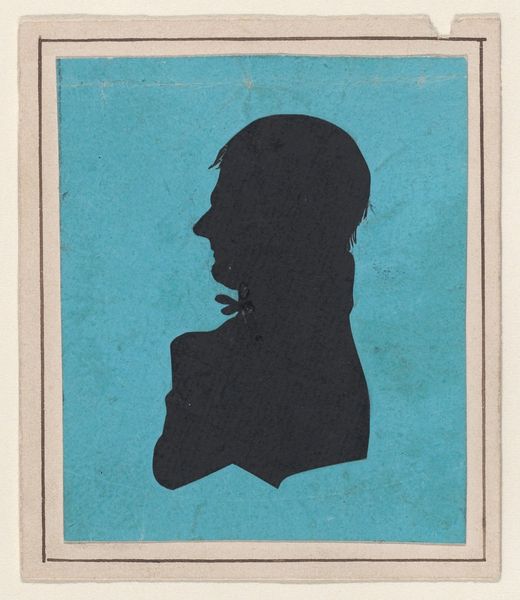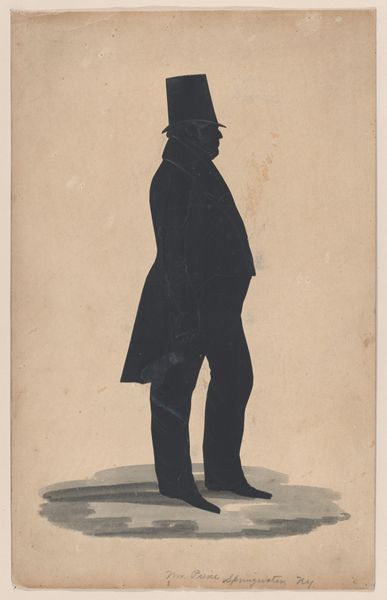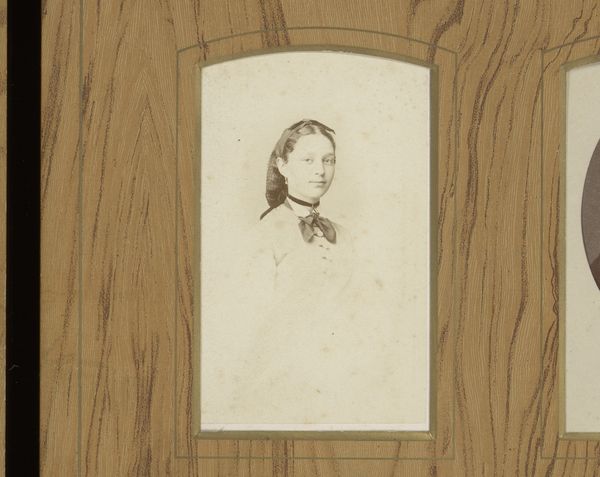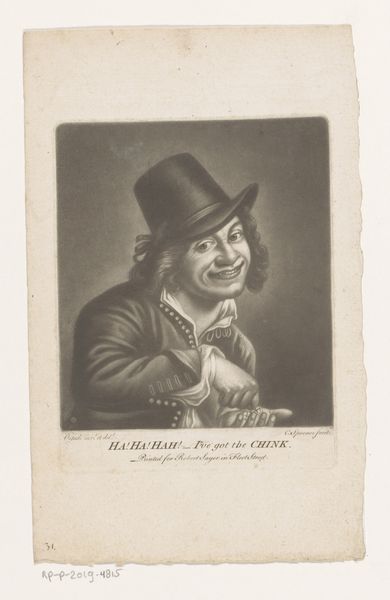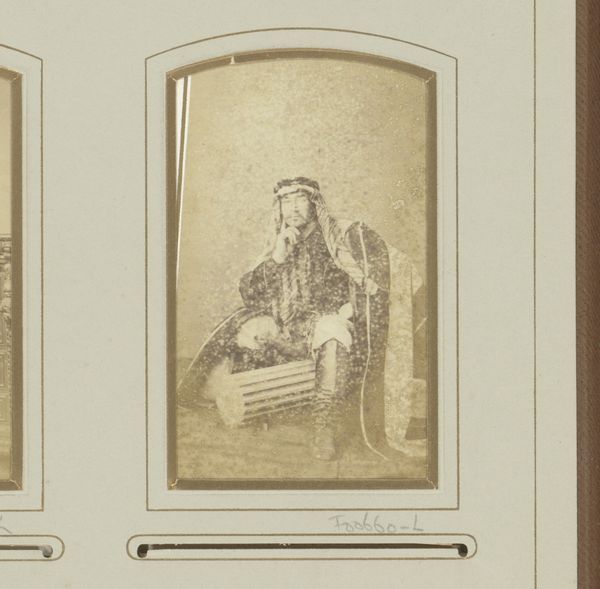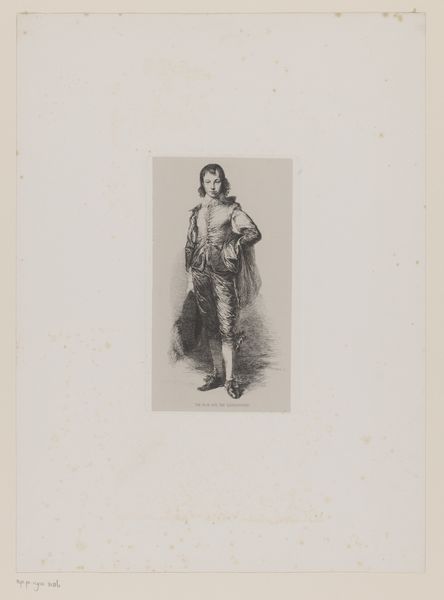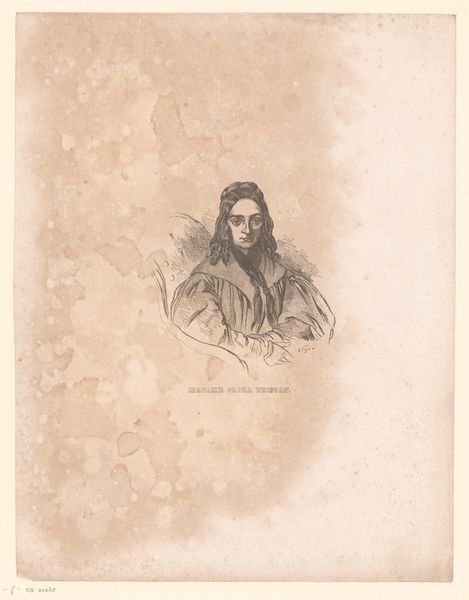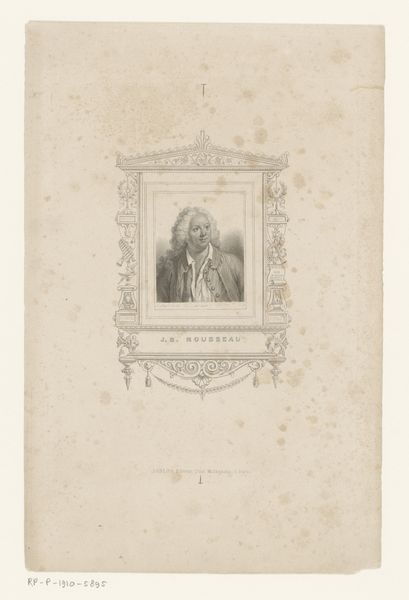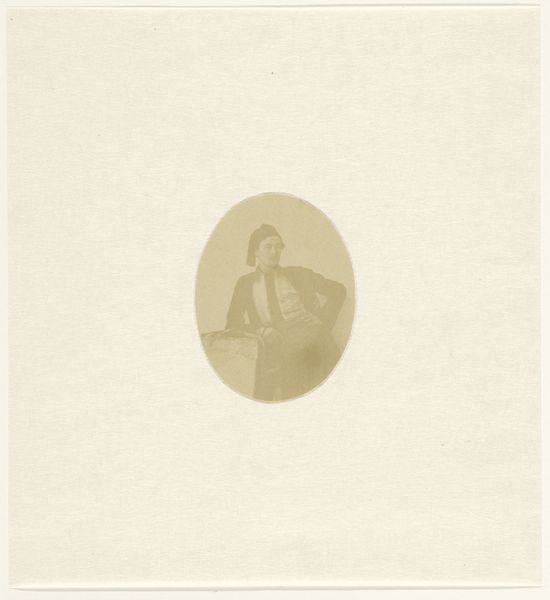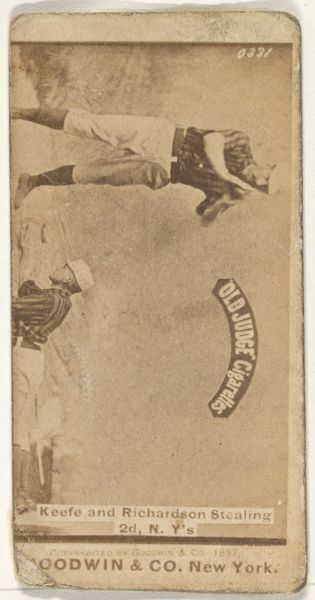
albumen-print, photography, albumen-print
#
albumen-print
#
portrait
#
photography
#
albumen-print
Dimensions: height 88 mm, width 63 mm
Copyright: Rijks Museum: Open Domain
Editor: This albumen print, "Francisco Vigil. Governor Pueblo of San Ildefonso," dates back to around 1900 and was created by Adam Clark Vroman. The presentation mimics a playing card. It’s quite striking... a portrait embedded within a king of diamonds card. What’s your take on its historical context? Curator: The integration of this portrait into a playing card format immediately raises questions about representation and power. Vroman, as a non-Indigenous photographer, was capturing the image of Francisco Vigil, a leader within his community. How do you think the format of the playing card affects our interpretation? Editor: I suppose it commodifies the image and person somehow? Like a collectible... Almost as if it's equating leadership to a game of chance or a position to be "won"? Curator: Exactly. The photograph also enters a visual economy; how might this contribute to or challenge the prevailing stereotypes about Indigenous people at the turn of the century? Who was this image meant for, and what was its intended purpose? Was it a form of documentation, a souvenir, or something else entirely? Editor: So, it’s less about the individual portrait itself, and more about how its presentation reflects the broader societal view of Indigenous populations during that time? It feels like it's becoming more problematic the more we look into it. Curator: Precisely. Think about the photographer's role and intentions in shaping that view. Vroman's work circulated within specific networks—museums, collectors, the art world— and played a part in defining perceptions about the West. By understanding those power dynamics, we can unpack the complex historical meanings embedded in this seemingly simple portrait. Editor: I see it now! The piece really exemplifies how photography, even portraiture, can be a political act, framing identity and reinforcing societal biases. Thanks for walking me through that! Curator: My pleasure! Analyzing art from this perspective helps us recognize that images are never neutral; they're always loaded with social and historical significance.
Comments
No comments
Be the first to comment and join the conversation on the ultimate creative platform.

